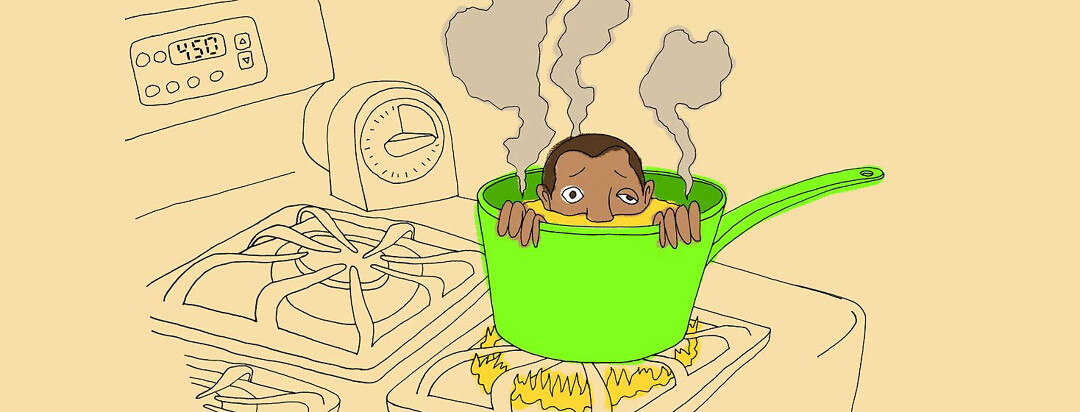What To Do While Waiting for a Diagnosis
There’s an old meme about a frog in a pot. It waits and waits to respond to increasing discomfort. It's not just frogs; humans procrastinate too! Awareness of a potentially serious challenge to our health can come on so slowly that we delay important checks. By the time we finally act, the obstacles we encounter can seem insurmountable.
First noticing symptoms
That often describes the path to a diagnosis of myasthenia gravis. The first symptoms can be vague. They can mimic many other less serious conditions. Double vision? "Perhaps I’ve worked too long." Drooping eyes? "I didn’t sleep right last night." Choking problems? "I need to eat more slowly." It's easy to procrastinate.
By that time the appointment with the appropriate specialist arrives, what might have been simple and straightforward is so much more challenging.
Finding a specialist
Finding that specialist can be challenging in itself. Since myasthenia gravis only affects perhaps 14 to 40 persons out of every 100 000, many doctors (especially those in other specialties) may have never encountered a person with the condition.1
Their first (second, and third) diagnoses may be very different. While most people will have the first appointment with their primary care provider, it’s often valuable to be assertive and ask for a referral to a neurologist with experience in myasthenia gravis (not a given!) early on. Specialists may not be available close to home, and waits can be significant.
Learn about the condition
First, read. Educate yourself using reputable sources. Avoid sites where frightened people share what they don’t know. They won’t help! There are many sources (from hospital systems to advocate organizations and of course, this one) that are reliable and readable.
They can be surprisingly encouraging, too. Knowledge is power. And that background reading will help you communicate when the appropriate appointments happen.
Keep a log
Next, write. Keep a log of not only symptoms but what might have prompted them. These might include ptosis (drooping eyelid) and double vision (often resolved by closing one eye) difficulty swallowing, choking, changes in facial expression or speech, or generalized muscle fatigue.2
The sorts of things that sometimes prompt symptoms are fatigue, minor infections, stress, or injury. If your symptoms are worse after a 12 hour day or during a sinus infection, those facts matter.
Both your PCP and a specialist will appreciate this sort of organized communication. Your log can provide hints on how to help you to feel better even before you meet with the neurologist.
Care for yourself
Throughout the wait, care for yourself. Myasthenia gravis worsens when anything else is challenging your general body health. So there is no harm - and potentially a lot of good - in setting a routine that is going to support your entire body early on.
Review your daily schedule and make sure you have lots of rest. Monitor fluids. Limit alcohol. While there’s no specific diet for MG, low-fat and balanced meals can never hurt. If swallowing or choking are among the symptoms, look for thickened and softened foods.
Consider several smaller meals rather than a big one. If you get positive results from these changes, write them down! Ultimately, the doctor’s job will be easier if you help with a summary of things that work—even if only slightly.
Manage your work schedule
Look at your work schedule, too. MG worsens later in the day and when you are stressed. Conserve your energy level and chalk in the most complex tasks early in the day. Learn to get the job done without overtime, and perhaps leave the extra stuff on your desk for tomorrow.
If this sort of reorganization helps relieve your symptoms, write that down too. Most can continue their jobs with a few accommodations. It's never too late to explore these potential changes.
Tests for MG
Even if you have already had baseline blood tests, your specialist will often begin a series of more specific tests. The majority of persons with myasthenia gravis show the presence of antibodies to one of at least 3 antigens involved in nerve to muscle communication.1
But some do not, and many blood tests are inconclusive. Very frequently, a first encounter with an MG specialist is followed by scheduling more tests. You may be asked to get a more intense series of blood tests — a paraneoplastic panel.3
These tests rule out a rare but serious syndrome associated with some cancers and look for signs of conditions that mimic myasthenia gravis like Lambert-Eaton Syndrome.3
Another test used is the single fiber electromyogram. It’s a long process of minuscule shocks to target areas to see how muscles react. It’s not particularly comfortable (a bit like allergy tests) but can be vital to the final diagnosis of myasthenia gravis.4
Effects of Mestinon
Even before the diagnosis is complete, either your primary care physician or your neurologist may prescribe mestinon.
The drug is so uniquely effective for myasthenia gravis that its positive effects are considered diagnostic in themselves. Listen carefully to the directions for administration; it’s a tricky drug in that it must be taken exactly as prescribed for best effects.
Take positive steps
Most importantly, as you wait for the final diagnosis "don’t wait." You can see from the text above, there are many positive steps you can take without having the ultimate report in hand. And they are good for you overall. So think positively and count the benefits of this thorough path to diagnosis.

Join the conversation